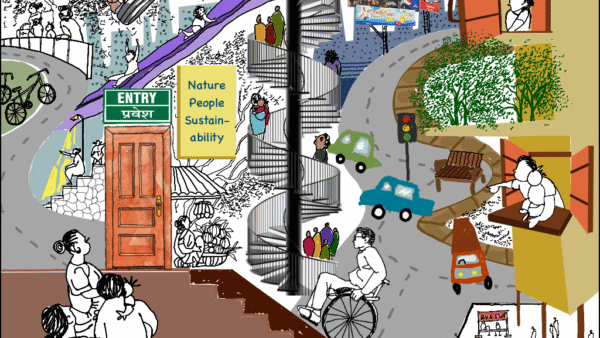Delhi, now ranked[1] among the country’s sixth most polluted cities, is ecologically defined by smog, stifling heat, and vanishing green cover. Yet, hidden within its polluted fold are seven biodiversity parks. Conceived to restore Delhi’s degraded ecosystems and counter its worsening climate crisis, these parks are instrumental in cooling neighbourhoods around it, reviving wetlands, and nurturing native forests in a city gasping for breath. They are collectively transforming the capital’s ecological map.
Jointly developed by the Delhi Development Authority (DDA) and the Centre for Environmental Management of Degraded Ecosystems (CEMDE) at the University of Delhi, the network of includes the Yamuna, Aravalli, Tilpath Valley, Neela Hauz, Kamala Nehru Ridge, Tughlaqabad and Kalindi biodiversity parks. Together they span more than 3,000 acres of self-sustaining ecosystems with hundreds of native and endangered species.
The parks have also become an integral part of the environmental and social life in their neighbourhoods — walking areas, tranquil spaces, study and scholarship places. This is Delhi, or parts of it, re-greening itself. Over the past two decades, scientists, ecologists and forest staff have painstakingly turned barren wastelands into ecologically rich habitats, which is also bringing back species once thought extinct[2] in the region.
One of the earliest is the Yamuna Biodiversity Park developed on its floodplain. It’s important to distinguish this from the riverfront development currently underway. Riverfront projects often[3] focus on beautification and infrastructure rather than restoring the river’s natural ecosystem, becoming real estate projects as in Sabarmati in Ahmedabad[4] and the Mula-Mutha in Pune.[5] The Yamuna riverfront project too faces similar criticism. However, the Yamuna Biodiversity Park stands out for working with the river’s native ecology and communities.
How it started
In 2000, the then Vice-Chancellor of Delhi University introduced Professor CR Babu, project in-charge of the Biodiversity Parks Programme, to the then Lieutenant Governor of Delhi, Vijay Kapoor, who was interested in improving the city’s environment. Babu was leading CEMDE. To counter the rapid disappearance of native flora and degradation of wetlands, he proposed an ambitious plan beginning with the Yamuna floodplains.
Delhi rests on two life-supporting landforms: The Yamuna and the ridge, which are the last spurs of the ancient Aravalli mountain range, estimated to be about 3.2 billion years old. Together, they sustained rich natural ecosystems and are considered the city’s natural heritage. With rapid urbanisation, however, both the ridge and the floodplain ecosystem severely degraded. Between 1998 and 2018, the urbanisation resulted in a loss of about Rs 560 million with the biggest contributor to this being forest cover which declined from 12,206.97 hectares in 1998 to 5,780.88 hectares in 2018.[6]
“Whatever water falls just accumulates on the surface as runoff. The wetlands that once stored it have been filled and converted into human settlements. That’s why Delhi faces such severe environmental deterioration; the quality of life has dropped, and people even plan to leave the city in winter because of the pollution,” says Babu, “About 22 years ago, Kapoor asked me, ‘Can you bring them back if I give you the land?’ I said, ‘Yes’.” Soon after, the DDA allotted 157 acres of land along the Yamuna floodplains and the work started.

Photo: CR Babu
Restoring the Yamuna Biodiversity Park was an elaborate process – one that began with tracing the river’s ecology from its source to its floodplains. “We travelled all along the Yamuna, from Hardiwar to Prayagraj to study what plant species were found, how they assembled into communities, and how these communities became ecosystems,” Babu says. The idea was to recreate the natural systems that once thrived along the river. “Our reference system,” he explained, “is the existing river basin communities outside Delhi, not inside, because inside Delhi those ecosystems have vanished.”
A challenge however was the salinity of the soil; the land was sodic or saline and nothing grew there except a few-salt loving bushes. So, the team started planting specific grasses and legumes. Over time, this improved the soil quality and drastically reduced tree mortality. Many wetlands in the area were heavily silted; the first step was to desilt them and introduce aquatic flora and fauna. “Within six months, we received hundreds of migratory birds and that made the public believe it was possible to bring back an ecosystem,” says Babu.
The area that once hosted only about 35 bird species now supports nearly 300; plant diversity has expanded from fewer than 100 species to over 1,200; mammals too have returned from just a handful earlier to around 25 today, including wild boars, hog deers – both seen in Delhi after 150 years – along with jackals and porcupines. The restored ecosystem now sustains four trophic levels – from plants to herbivores, wild boars and carnivores, jungle cats and jackals, even a leopard.
Restoring floodplains
Seeing it take shape, DDA allotted 300 more acres for the project. This stretch lies on the active floodplain of the Yamuna. Babu notes that the previous 157 acres will never receive flood water because it is separated by the Jagatpur-Wazirabad bund but the newly added 300 acres lie on the active floodplain where the Yamuna’s water naturally spreads out when levels rise. The task was to restore this floodplain.
Yasir Arafat, former Nature Education Officer and scientist at Kalindi Biodiversity Park, instrumental in developing Neela Hauz and Kalindi Biodiversity parks, notes that restoring floodplain is crucial as “their purpose is to absorb excess water during the monsoon which allows these wetlands to also recharge naturally. During the lean period, they release this water back into the river to sustain its flow.”
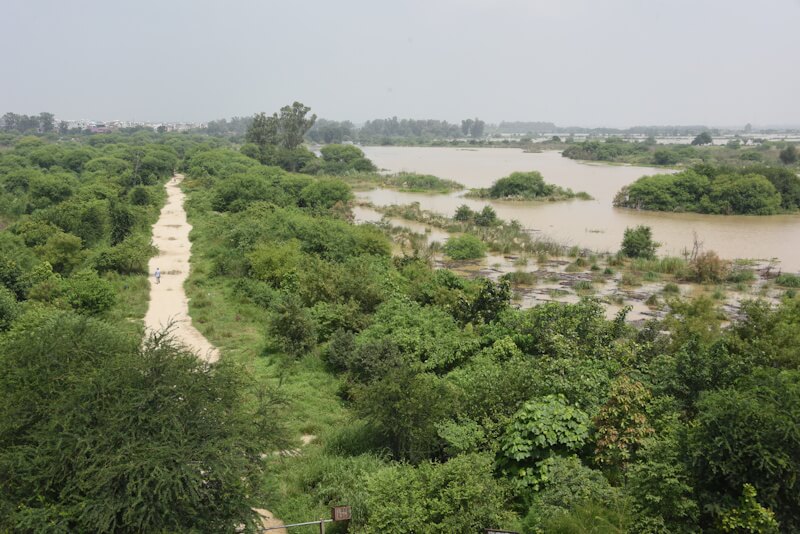
Photo: CR Babu
Poonam Dewan, retired Additional Commissioner (Landscape), DDA, shares how Phase II of the biodiversity park was designed with water bodies that hold seasonal floodwater. The restoration, therefore, relied on planting native plant species, chosen for their ability to withstand and recover from floods; the floodplain grasslands act as natural barriers. ”This floodplain wetland can store up to 500 million gallons of flood water every year,” shares Babu.
However, the same cannot be said for other DDA parks on Yamuna’s floodplains. Earlier this year, these parks – Amrut Biodiversity Park, Asita East, and Kalindi Aviral – were inundated.[7] Environmentalists pointed out[8] that this exposes the contradiction of turning floodplains into manicured parks. These are all part of the Yamuna Riverfront Development project,[9] under which 22 km of Yamuna floodplains are earmarked for “recreational” activities, public facilities, and biodiversity parks beautify the space. Critics raised concerns[10] that such projects lead to the concretisation of riparian ecosystems which will result in their gradual destruction.
Apart from the Kalindi Biodiversity Park, the others are not in collaboration with the CEMDE. When asked, Babu clarified that CEMDE was not involved and he had only advised on the type of biodiversity. Dewan says that there are two ways to see the Yamuna riverfront projects. One is to treat it like a biodiversity park where people engage with the environment not as tourists but as interested in ecology while the other is to develop it as a tourist hotspot which comes with risks. “If we make it heavily commercial, the fauna and flora suffer,” she notes.
From a mining pit to an orchid conservatory
While Yamuna Biodiversity Park was the first one to be restored, the second one, the Aravalli Biodiversity Park, located near Vasant Vihar, is the largest to be restored. Work here began in 2004,[11] and today the Aravalli Biodiversity Park spans 699 acres, supporting over 2,000 species of plants and animals. Nearly 85 percent of the landscape was once a mined-out area, excavated for murum or laterite soil. Through ecological restoration, this has been transformed. The park has an orchidarium[12] with 70 species of orchids, a butterfly and a fern conservatory.
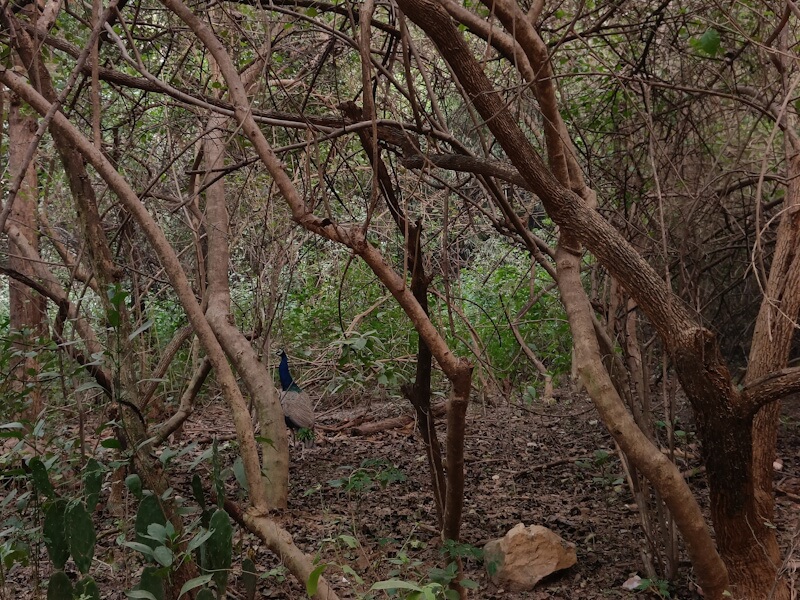
Photo: Ankita Dhar Karmakar
The restoration work along Delhi’s Aravalli range extended to the Tilpath Valley and the city’s ridge, both part of the same ancient mountain system. The former, with its series of low ridges enclosing shallow valleys, showcases the natural beauty of the Aravallis and supports vegetation distinct from other parts. The Delhi Ridge, often seen as separate, is part of the same geological formation, and hosts the Kamala Nehru Ridge Biodiversity park, near Delhi University.
How constructed wetland ecosystems work
Two biodiversity parks underwent restoration using the constructed wetland system, the Neela Hauz and Kalindi Biodiversity parks. The Neela Hauz Biodiversity Park stands as one of Delhi’s most successful examples of in-situ wetland restoration. Spread over 10 acres — 60 percent wetland and 40 percent terrestrial forest – it was to revive a once well-known water body destroyed by road construction and solid waste dumping, which had turned the lake ecosystem into a polluted, dead water body receiving sewage from nearby colonies during the Commonwealth Games.[13]
When local residents petitioned the Delhi High Court, the court ordered the PWD to restore the lake to its original state. However, while the PWD cleared waste,[14] it failed to revive the wetland’s ecological functions. The matter was taken to the then LG, Tejinder Khanna, who recognised[15] the restoration work being done in Delhi’s biodiversity parks, declared the area as Neela Hauz Biodiversity Park, and entrusted its redevelopment to Babu’s team.
Work began in 2014 – desilting, landscaping and creating a natural gradient to redirect the flow of water. “We designed an in-situ remediation system,” Arafat explains, referring to the constructed wetland built directly within the existing drain. The process involves trapping solid waste with nets, allowing suspended solids to settle, and then passing the water through rock filters to create aeration. “As oxygen mixes, microbes are activated and decompose nutrients,” he explains. The treated water then flows through plant beds where nutrients are absorbed. This further purifies it before it enters the lake. The Neela Hauz wetland now treats 1-3 million litres of sewage water daily from the Kishangarh canal, and supports rich riverine vegetation and thousands of migratory birds each winter.
The Kalindi biodiversity park is a floodplain wetland that has two functional constructed wetlands. For these, they built filtration zones with rock filters, followed by wetlands with stones and aquatic plants, says Arafat. “When water flows through them, it gets cleaned through a natural process called phytoremediation”, continues Arafat. The team also developed a ring wetland, surrounded by 15,000 saplings from the riverine forest community. Two of the constructed wetland systems, at Kilokari and Dhobi Ghat, are now effectively cleaning the water. The Maharani Bagh constructed wetland, however, remains only partially operational. The challenges remain in boundaries not being fully demarcated and locals grazing their cattle.
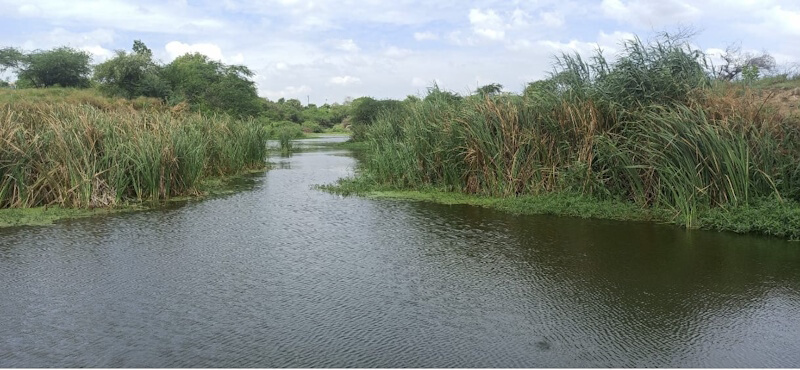
Photo: Yasir Arafat
The way ahead
Delhi’s reclaiming its natural ecology has been noticed. The National Mission for Clean Ganga, Babu shares, is modeled[16] on Delhi’s biodiversity parks. In 2014, the National Green Tribunal directed that biodiversity parks be established[17] along the floodplains of all rivers in India as part of river rejuvenation efforts.
These biodiversity parks, says Dewan, are central to combating Delhi’s worsening climate crisis. Designed to create natural habitats, they restore balance to degraded ecosystems, help regulate temperature, and act as carbon sinks. “The key is to move away from the practice of planting monocultures. A natural forest doesn’t only have one species but supports a diverse and thriving ecosystem.” Adds Arafat, “If we want true urban sustainability and climate resilience, we need natural ecosystems, not just parks and gardens.”
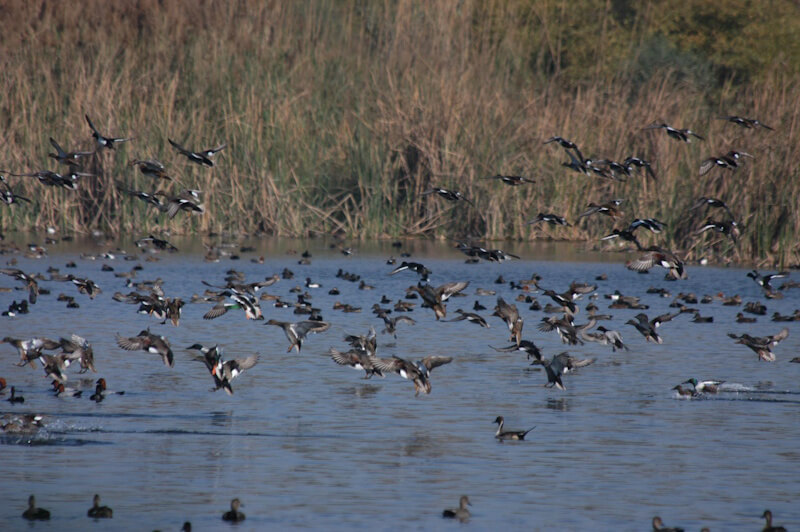
Photo: CR Babu
Citizens, Babu says, can play a key role. “All open spaces should be covered with green buffers, some kind of mini biodiversity parks. And Delhi should have more such parks so that you don’t have heat island formation, waterlogging or air pollution. Instead of smog guns, a small vegetation buffer will be more effective in trapping particulate matter like PM 2.5.”
Research[18] also shows that the blue-green infrastructure is a way to combat climate impacts and is now recommended as an integral part of urban planning. Nidhi Jamwal, well-known environmental journalist, says, “When we plan cities, we think about highways, flyovers, or stormwater drains, but we don’t realise that BGI is core to urban planning. Because we have dissociated ourselves from it, our cities are in such a mess. If we want our cities to survive the next few decades, we have to start valuing our urban commons, whether it’s forests or wetlands.”
Ankita Dhar Karmakar, Multimedia Journalist and Social Media in-charge in Question of Cities, has reported and written at the intersection of gender, cities, and human rights, among other themes. Her work has been featured in several digital publications, national and international. She is the recipient of the 4th South Asia Laadli Media & Advertising Award For Gender Sensitivity and the 14th Laadli Media & Advertising Award For Gender Sensitivity. She holds a Master’s degree in English Literature from Ambedkar University, New Delhi.
Cover Photo: Ankita Dhar Karmakar


